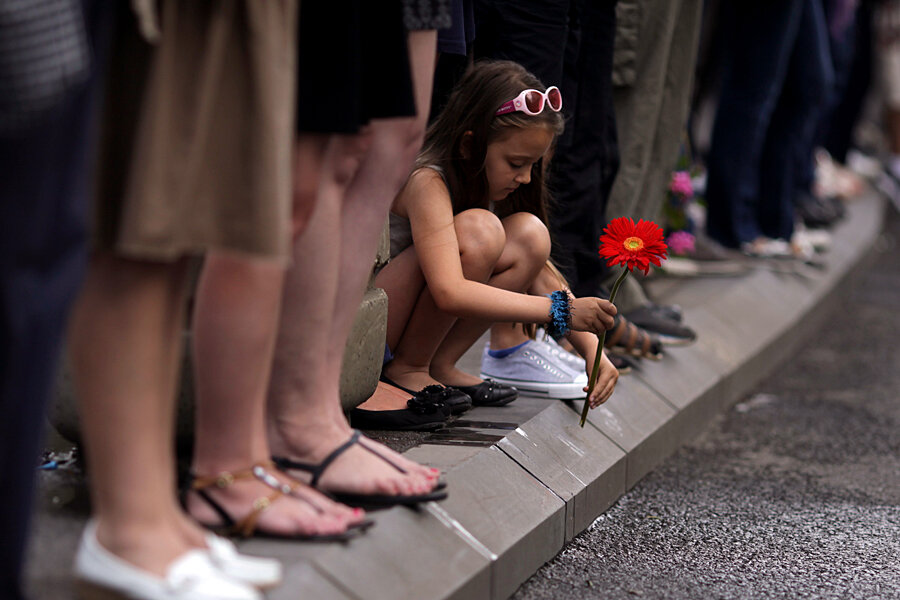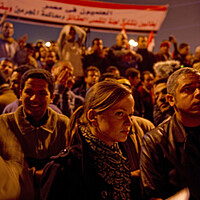In Bosnia's schools, three different people learn three different histories
Loading...
| Sarajevo, Bosnia and Herzegovina
When Daniel Eror studied World War II in high school, his textbook included one sentence noting that the Croatian fascist Ustase regime ran a concentration camp during the war.
Only much later did Mr. Eror, now a university graduate, learn that the Jasenovac camp was the site of the murder of up to 100,000 people. He was shocked that his school had glossed over such a significant historical event.
“They were trying to hide it,” says Eror. "If we're talking about reconciliation we need to be honest."
Two decades after Bosnia's brutal civil war ended, reconciliation is still a dream, one the education system is pushing further away from reality. Bosnia Serbs, Bosniak Muslims and Croats typically study in schools with curricula tailored to their ethnic biases. World War II is hardly the only period that receives wildly different treatments depending on the school.
“If it's difficult to talk about the Second World War, you can imagine how difficult it is to talk about this recent war,” says Eror, who studied the Croat curriculum at a Catholic school.
Drifting apart
Bosnia's civil war ended with the Dayton Accords in 1995, which divided Bosnia into two largely autonomous entities, the mostly Serb Republika Srpska, and the Federation of Bosnia and Herzegovina, which is populated mostly by Bosniak Muslims and Croats. Education policy has been in the hands of local governments since and consequently there are 13 ministries of education in Bosnia.
As a result, each ethnic group is taught a Bosniak-, Croat-, or Serb-specific curriculum, complete with its own textbooks, that often portray the other groups as aggressors and its own as victims. Serb textbooks describe the Ottoman period as a cruel time, while Bosniak textbooks call it a golden era. "National" history in the Serbian curricula is a history of Serb people and of Serbia, not of Bosnia and Herzegovina.
Problems only multiply when dealing with recent history. Semir Hambo, who teaches history at a school in Sarajevo that uses the Bosniak curriculum, says textbooks and teachers skirt controversial issues by giving a simple overview with just facts. For example, when covering the civil war, “the main points of the war are (told), just enough so the children know it actually happened,” he says.
Many say this education system is pushing Bosnia's citizens further apart.
“If you don't have a common curriculum, if you don't agree about history, how can we make a modern political culture?” asks Dubravko Lovrenovic, a prominent historian and former deputy minister of education in the Federation of Bosnia and Herzegovina. “How can we create citizens of Bosnia and Herzegovina? How can we talk about a common future? We can only talk about division.”
But politicians here seem to like the educational divide. Dr. Lovrenovic says he tried to implement a common curriculum in the Federation more than a decade ago, but was rejected by Croat-majority cantons.
Damir Marjanovic, who spent nearly a year as minister of education in Sarajevo Canton, says some politicians use the nationalist issue as an excuse to avoid reforming any aspect of education, even the non-controversial subjects.
"A neutron is a neutron in any language," he says. But “most politicians are using the story about language, history, and religion to do nothing about chemistry and biology. It's a political issue."
Avoiding controversy
Katarina Batarilo-Henschen, a research fellow at the Georg Eckert Institute for International Textbook Research, says that teachers have been urged to use a multi-perspective approach, particularly for contested issues. And multiple attempts to improve textbooks have resulted in incremental changes, such as removing terms considered offensive or presenting contested issues in a less controversial way.
But the multi-perspective approach has been difficult to implement in classrooms, and significant problems remain with the texts, Dr. Batarilo-Henschen says.
Some nongovernmental organizations are trying get around the bureaucracy and politics by publishing supplemental workbooks for teachers.
The Center for Democracy and Reconstruction in Southeast Europe (CDRSEE) produced a booklet for history classrooms throughout the Balkans that uses primary sources to present differing perspectives on historical events, hoping to open students' minds and promote critical thinking. The organization is now in the process of producing a book that will cover more recent history, including the wars of the 1990s. The European Association of History Educators is also releasing a multi-perspective history workbook in Bosnia and other Balkan countries. Both organizations also conduct teacher training.
Batarilo-Henschen says such supplements and teacher trainings are beneficial. But she adds that the ideal solution may not be to force all students to use the same textbooks, but improve all curricula.
“I think it’s OK to have your own curriculum and your own history textbook," she says, but you have to use "the right approach to history teaching that will help you not to see the other one as a perpetrator, as an enemy.... [You have to teach] that many many events in history are being perceived differently from different views.”








